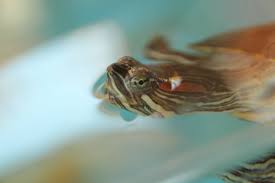New flying reptile that lived in China 160 years ago reveals oldest opposed thumb
This discovery adds to the list that Darwinopteran pterosaurs such as K antipollicatus also evolved an opposed thumb.The research team scanned the fossil of K antipollicatus using micro-computed tomography micro-CT, a technique making use of X-ray to image an object.By studying its forelimb morphology and musculature, they suggest that K antipollicatus could have used its hand for grasping, which is likely an adaptation for arboreal life.Tiaojishan palaeoforest is home to many organisms, including three genera of darwinopteran pterosaurs.

- Country:
- United Kingdom
A team of international researchers has discovered the earliest-known example of an opposed thumb on a new tree-dwelling pterosaur species that lived in China 160 million years ago.
Dubbed ‘Monkeydactyl’, the small-bodied Darwinopteran pterosaur with an estimated wingspan of 85 cm was discovered in the Tiaojishan Formation of Liaoning, China.
The researchers from Brazil, China, UK, Denmark and Japan have described the new Jurassic pterosaur Kunpengopterus antipollicatus. The specimen was preserved with an opposed pollex (“thumb”) on both hands. The species name ‘antipollicatus’ means ‘opposite thumbed’ in ancient Greek, in light of the opposed thumb of the new species.
This is the first discovery of a pterosaur with an opposed thumb. It also represents the earliest record of a true opposed thumb in Earth’s history. The researchers published their discovery on Tuesday in the journal Current Biology.
''The fingers of ‘Monkeydactyl’ are tiny and partly embedded in the slab. Thanks to micro-CT scanning, we could see through the rocks, create digital models and tell how the opposed thumb articulates with the other finger bones,” said Fion Waisum Ma, co-author of the study.
''This is an interesting discovery. It provides the earliest evidence of a true opposed thumb, and it is from a pterosaur - which wasn’t known for having an opposed thumb,” said the PhD researcher at the University of Birmingham.
A true opposed pollex is mostly present in mammals (eg primates) and some tree frogs, but extremely rare among extant reptiles except for chameleons. This discovery adds to the list that Darwinopteran pterosaurs such as K antipollicatus also evolved an opposed thumb.
The research team scanned the fossil of K antipollicatus using micro-computed tomography (micro-CT), a technique making use of X-ray to image an object.
By studying its forelimb morphology and musculature, they suggest that K antipollicatus could have used its hand for grasping, which is likely an adaptation for arboreal life.
“Tiaojishan palaeoforest is home to many organisms, including three genera of darwinopteran pterosaurs. Our results show that K antipollicatus has occupied a different niche from Darwinopterus and Wukongopterus, which has likely minimised competition among these pterosaurs,” said Xuanyu Zhou from China University of Geosciences who led the study.
In order to test the arboreal interpretation, the team analysed K. antipollicatus and other pterosaurs using a set of anatomical characters related to arboreal adaptation.
The results support K antipollicatus as an arboreal species, but not the other pterosaurs from the same ecosystem. This suggests niche-partitioning among these pterosaurs and provides the first quantitative evidence that at least some Darwinopteran pterosaurs were arboreal.
“Darwinopterans are a group of pterosaurs from the Jurassic of China and Europe, named after Darwin due to their unique transitional anatomy that has revealed how evolution affected the anatomy of pterosaurs throughout time,” said Rodrigo V Pegas from Federal University of ABC, in Sao Bernardo, Brazil.
“On top of that, a particular darwinopteran fossil has been preserved with two associated eggs, revealing clues to pterosaur reproduction. They’ve always been considered precious fossils for these reasons and it is impressive that new darwinopteran species continue to surprise us!” Pegas said.
(This story has not been edited by Devdiscourse staff and is auto-generated from a syndicated feed.)
ALSO READ
Earthquake of magnitude 3.7 strikes J-K's Kishtwar
After police officer's death, Greek soccer fans will need a state-issued QR code to attend games
17 rescued, at least 3 believed missing after a boat carrying migrants is lost near a Greek island
Morocco's earthquake killed thousands. But survivors marking Ramzan say it didn't shake their faith
Magnitude 4.2 earthquake strikes Bay of Bengal










